
Kisoro
2025 Guide to Kisoro
Kisoro, a charming town in southwestern Uganda, is nestled at the foothills of the Virunga Mountains, earning it the nickname “Switzerland of Africa” for its hilly terrain and breathtaking scenery. Located in Kisoro District, near the borders of Rwanda and the Democratic Republic of Congo (DRC), this vibrant hub covers 729.7 square kilometers and is home to approximately 300,000 people, with 18,000 in Kisoro Town. The Bafumbira, Bakiga, and Batwa communities shape its rich cultural tapestry, with Kinyarwanda and Rufumbira widely spoken. Kisoro is a key base for exploring Mgahinga Gorilla National Park, Bwindi Impenetrable National Park, and Lake Mutanda, offering gorilla trekking, golden monkey tracking, volcano hiking, and cultural immersion. Just 88km from Kabale and 14km from the Cyanika border with Rwanda, Kisoro is an accessible launchpad for adventure. This guide covers everything you need to plan your visit, from activities and accommodations to dining and conservation efforts.
kisoro
2025 Guide to Kisoro
Kisoro, a charming town in southwestern Uganda, is nestled at the foothills of the Virunga Mountains, earning it the nickname “Switzerland of Africa” for its hilly terrain and breathtaking scenery. Located in Kisoro District, near the borders of Rwanda and the Democratic Republic of Congo (DRC), this vibrant hub covers 729.7 square kilometers and is home to approximately 300,000 people, with 18,000 in Kisoro Town. The Bafumbira, Bakiga, and Batwa communities shape its rich cultural tapestry, with Kinyarwanda and Rufumbira widely spoken. Kisoro is a key base for exploring Mgahinga Gorilla National Park, Bwindi Impenetrable National Park, and Lake Mutanda, offering gorilla trekking, golden monkey tracking, volcano hiking, and cultural immersion. Just 88km from Kabale and 14km from the Cyanika border with Rwanda, Kisoro is an accessible launchpad for adventure. This guide covers everything you need to plan your visit, from activities and accommodations to dining and conservation efforts.
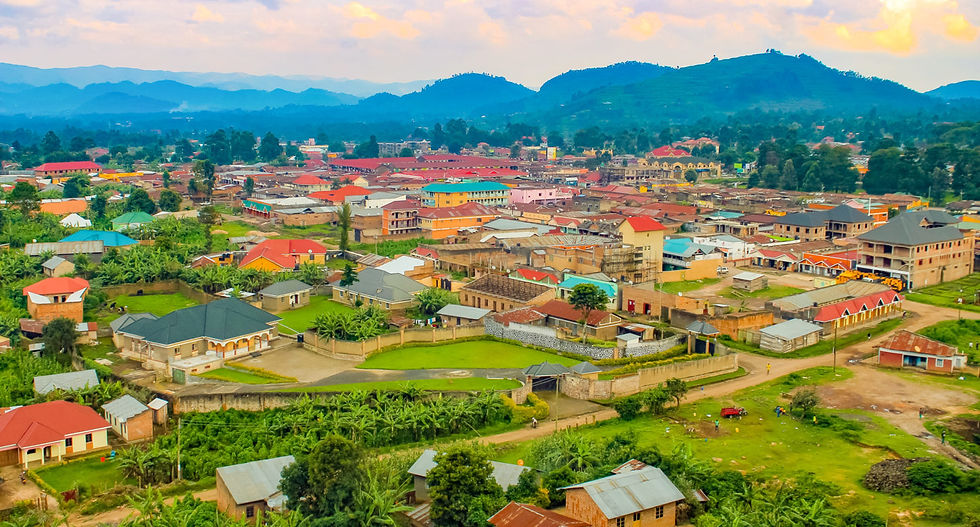
kisoro's Attractions and Activities
Gorilla Trekking in Mgahinga and Bwindi
Kisoro is the primary gateway to Mgahinga Gorilla National Park (14km away), home to the Nyakagezi gorilla family, and the southern sectors (Nkuringo, Rushaga) of Bwindi Impenetrable National Park, a UNESCO World Heritage Site hosting over half the world’s mountain gorillas. Gorilla trekking ($800 permit for non-residents) involves 2-7 hour hikes through forests, with a near-100% sighting rate. One hour is spent observing these gentle giants. Book 4-12 months in advance.
Golden Monkey Trekking
Mgahinga Gorilla National Park is Uganda’s premier spot for tracking endangered golden monkeys, with the largest habituated troops in Africa. Treks ($100 for non-residents) start at 7:30 AM from Ntebeko gate, lasting 1-3 hours through bamboo forests. Visitors enjoy one hour with these playful primates. The activity is less strenuous than gorilla trekking, ideal for families.
Volcano Hiking
Kisoro’s Virunga volcanoes—Muhavura (4,127m), Gahinga (3,474m), and Sabyinyo (3,669m)—offer thrilling hikes with stunning views. Muhavura’s 8-hour trek leads to a crater lake; Sabyinyo’s 8-hour climb touches Uganda, Rwanda, and DRC; Gahinga’s 6-hour hike features a swampy crater. Costs range from $80-$100, including guides. The trails, managed by UWA, showcase bamboo forests and alpine flora.
Lake Mutanda Adventures
Lake Mutanda, 10km from Kisoro, is a freshwater gem framed by Virunga volcanoes. Activities include sunrise/sunset canoe cruises ($10-$30), sport fishing for tilapia ($15-$20), and island hiking ($20-$40). Guided tours explore islands like Mutanda Island, offering birdwatching (e.g., African fish eagles) and Bakiga cultural stops. The lake is distinct from Lake Bunyonyi, which is 80km away near Kabale.
Bird Watching
Kisoro’s diverse habitats—lakes, forests, and wetlands—host over 200 bird species, including Albertine Rift endemics like the Rwenzori turaco and strange weaver. Top spots include Lake Chahafi, Echuya Forest Reserve, and Mgahinga’s Sabyinyo Gorge. Guided birding tours ($20-$50) are best during wet seasons (March-May, September-November) for migratory birds. Free evening birding (4:30-6:00 PM) is available along Mgahinga’s buffalo wall.
Batwa Cultural Experience
The Batwa, indigenous forest dwellers, offer cultural tours ($80 for non-residents) in Mgahinga, showcasing their hunting, music, and storytelling traditions. Visit the Garama Cave, a former Batwa refuge, or the Batwa Village near Ntebeko, built by Volcanoes Safaris Partnership Trust. These tours support Batwa livelihoods and preserve their heritage.
Kisoro Market and Town Walks
Explore Kisoro’s vibrant markets on Mondays and Thursdays along Kabale Road or at Bunagana (Tuesdays/Fridays) on the DRC border. Buy kitenge fabric, fruits, or Irish potatoes, a regional staple. Guided town walks ($10-$20) through Bafumbira and Bakiga villages reveal local life, crafts, and coffee farms. The Kisoro Market Walking Tour offers a glimpse into upcountry commerce.
Coffee Tours
Mountain Gorilla Coffee Tours and other operators offer coffee-making experiences ($15-$30), guiding visitors from plantation to brewed cup. Learn about Kisoro’s robust coffee, a key export, and support community-based tourism. Tours often include farm visits and tastings.
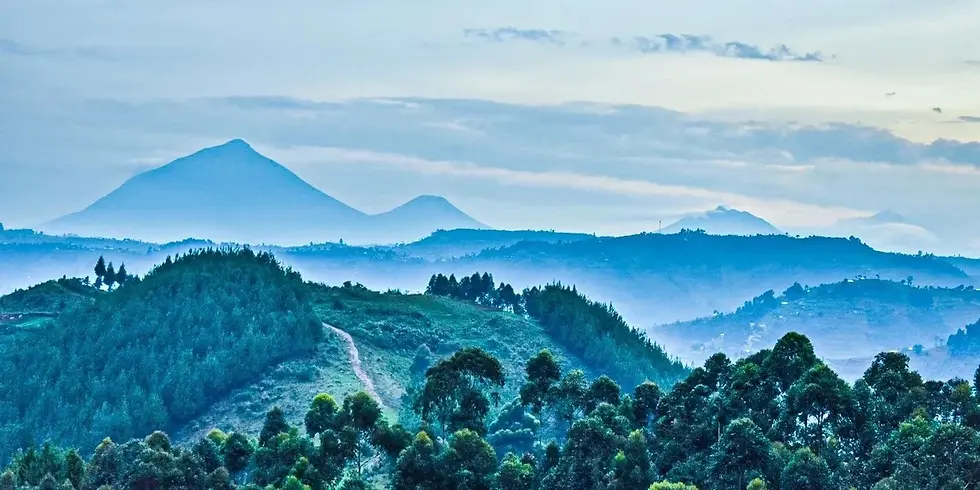
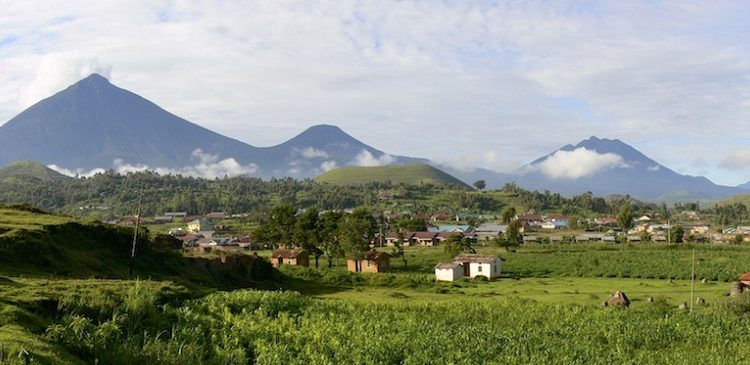
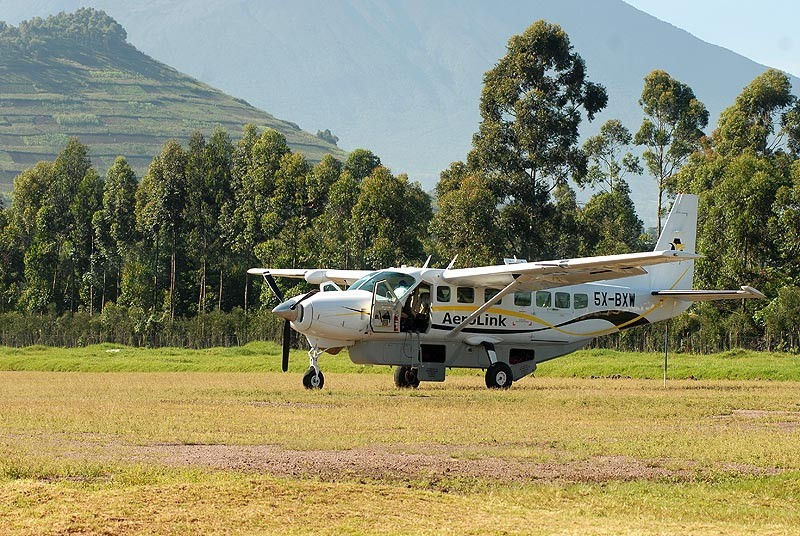


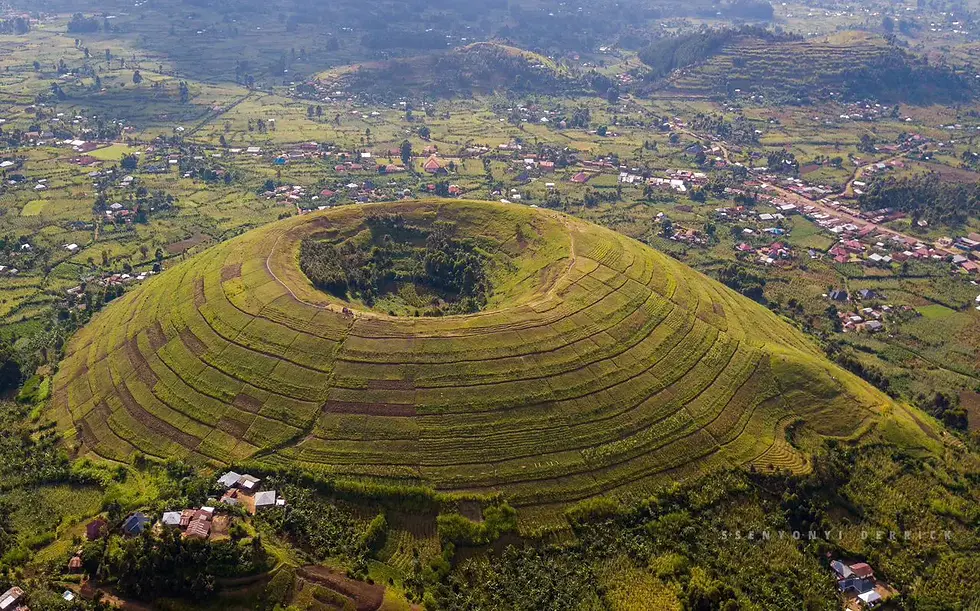
How to Get to kisoro
Kisoro is accessible by air, road, or public transport.
-
By Air: Daily flights from Entebbe or Kajjansi to Kisoro Airstrip (90 minutes, $200-$400 one-way) via Aerolink Uganda, followed by a 10-minute drive to town. The airstrip’s 1.2km runway was upgraded in 2024, boosting tourism.
-
By Road: From Kampala, the 484km drive (8-10 hours) via Masaka, Mbarara, and Kabale (88km murram road from Kabale) requires a 4x4 in wet seasons. From Kigali, Rwanda, it’s 80km (2-3 hours) via Cyanika border. Guided transfers cost $100-$300.
-
Public Transport: Postbus or coaches (e.g., Jaguar, Horizon) from Kampala to Kisoro cost UGX 20,000-30,000 ($5-$8), taking 8-10 hours. Night buses (17:00 or 20:00) cost UGX 20,000-25,000. From Kabale, taxis or boda-bodas cost UGX 5,000-10,000. Market days (Monday/Thursday) increase transport options to Cyanika/Bunagana borders.
-
Visa Requirements: Uganda visas ($50) are available online or on arrival. The $100 East African Tourist Visa covers Uganda, Rwanda, and Kenya. Carry a yellow fever vaccination certificate.
-
Access Points: Kisoro Town is the hub, with Ntebeko gate (Mgahinga, 14km) and border posts at Cyanika (Rwanda) and Bunagana (DRC) nearby.
BEST TIME TO VISIT
Kisoro’s high altitude (1,900m) offers a cool climate, ideal year-round.
-
Dry Seasons (June-August, December-February): Best for gorilla trekking, hiking, and canoeing, with drier trails and clear views. July is driest (20mm rain). Book permits and lodges 4-12 months ahead for peak season (June-July). Temperatures range from 15-25°C (59-77°F).
-
Wet Seasons (March-May, September-November): Lush scenery and excellent birdwatching, with fewer crowds. October is wettest (150mm rain), but activities continue. Budget travelers can find lower hotel rates (March-May).
Park Fees and Permits
Fees support conservation and community projects.
-
Gorilla Trekking Permit: $800 (non-residents), $700 (residents), UGX 250,000 (~$67) (East Africans).
-
Golden Monkey Trekking: $100 (non-residents), UGX 370,000 (~$100) (East Africans).
-
Volcano Hiking: $80-$100 per person.
-
Batwa Trail: $80 (non-residents), UGX 50,000 (~$13) (East Africans).
-
Park Entrance (Mgahinga/Bwindi): $40/day (non-residents), UGX 20,000 (~$5) (East Africans).
-
Other Activities: Canoeing ($10-$30), birding/cultural tours ($10-$50), coffee tours ($15-$30).
WHERE TO STAY
Kisoro offers diverse accommodations, from town hotels to park-adjacent lodges.
-
Luxury: Mount Gahinga Lodge (near Ntebeko gate) offers upscale bandas with volcano views ($200-$400/night). Travellers Rest Hotel (Kisoro Town) provides refurbished en-suite rooms ($100-$200).
-
Mid-Range: Kisoro Tourist Hotel (opposite UWA office) features self-contained rooms with balconies ($40-$80). Mucha Hotel, near Lake Mutanda, is a scenic favorite ($50-$100).
-
Budget: 3 Way Gorilla Resort (Cyanika Road) and Virunga Hotel offer simple rooms or camping ($20-$40). UWA Campsites near Ntebeko cost $5-$10/person.
-
Community-Based: Batwa homestays near Mgahinga or Bakiga homestays in Bufuka provide cultural immersion ($10-$30).
Book early for dry seasons. Most include meals, Wi-Fi, and transfers to activities
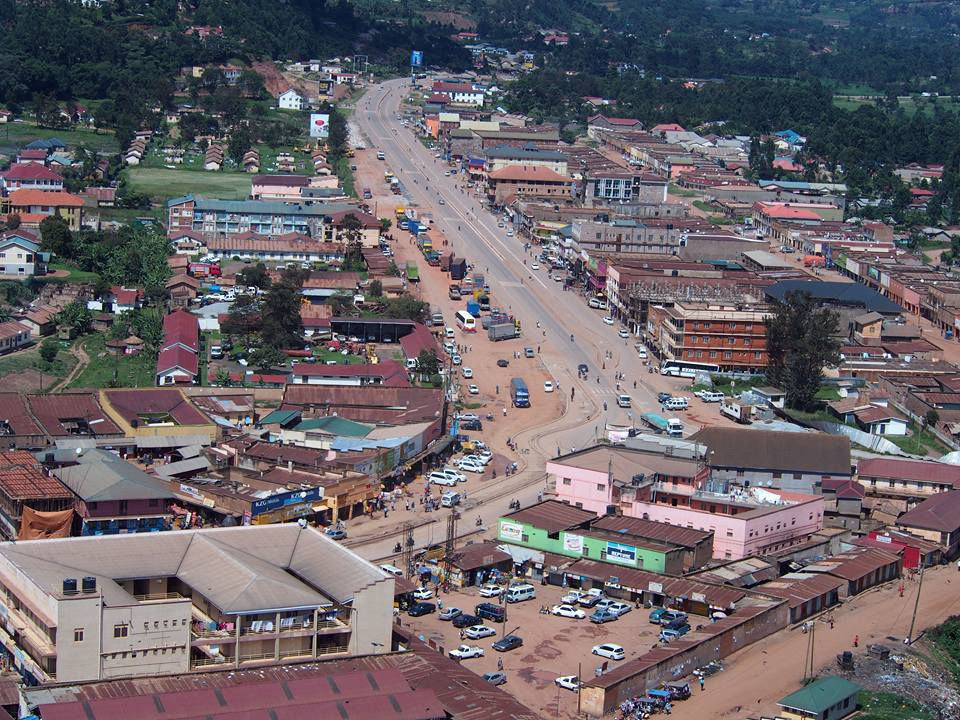

DINING AT kisoro
Dining in Kisoro blends Ugandan staples with international options, often served with views of volcanoes or Lake Mutanda. At Mount Gahinga Lodge, enjoy matoke (steamed bananas), luwombo (stew in banana leaves), and grilled tilapia from Lake Mutanda, paired with Irish potatoes, a Kisoro specialty. Budget eateries like Kisoro Tourist Hotel serve rolex (egg-chapati roll) and kalo (millet bread) for $1-$3. Mucha Hotel offers farm-fresh meals with Kisoro coffee, a regional pride. Cultural tours include Bakiga or Batwa meals, such as smoked fish or groundnut stew. Markets on Mondays/Thursdays sell fresh fruits and roasted maize. Most lodges accommodate vegetarian, vegan, or gluten-free diets with advance notice, ensuring a hearty taste of Kisoro’s highland cuisine.
Packing List & Preparation
Prepare for high-altitude and outdoor activities.
-
Clothing: Waterproof hiking boots, long-sleeved shirts, trousers, rain jacket, gloves (for trekking), hat, warm layers for chilly nights (10-15°C). Neutral colors for wildlife activities.
-
Gear: Binoculars, camera (no flash for gorillas), insect repellent, sunscreen, reusable water bottle, daypack, trekking poles for hikes.
-
Health: Yellow fever vaccination (required), malaria prophylaxis, personal medications, first aid kit. Moderate fitness is needed for trekking/hiking.
-
Other: Cash (USD/UGX) for tips ($10-$20 for guides/porters), souvenirs (e.g., kitenge fabric), permit confirmations, passport.
Boda-bodas (motorcycles, UGX 7,000 to Mgahinga) are common but rough; consider lodge shuttles (UGX 60,000).
Safety & Conservation
Kisoro is safe with robust tourism infrastructure.
-
Safety: UWA rangers escort treks, and tourism police patrol borders (Cyanika, Bunagana). The area has been stable since 2013 M23 rebel activity. Avoid walking alone at night in town.
-
Wildlife Health: Maintain 7-8m distance from gorillas/monkeys, avoid eating/drinking near them, and don’t trek if ill to prevent disease transmission.
-
Conservation: Permit fees fund gorilla and golden monkey protection, anti-poaching patrols, and Batwa community projects. Sustainable tourism, as promoted by operators like Bamboo Ecotours, preserves Kisoro’s biodiversity and cultural heritage. Avoid littering to protect lakes and forests.



FAQ
What is the best time to visit Kisoro?
Dry seasons (June-August, December-February) for trekking/hiking; wet seasons (March-May, September-November) for birdwatching and budget travel.
How much is a gorilla permit?
$800 for non-residents, $700 for residents, UGX 250,000 for East Africans.
Is Kisoro safe?
Yes, with UWA rangers, tourism police, and stable borders since 2013.
What makes Kisoro unique?
Its proximity to Mgahinga and Bwindi for gorilla/monkey trekking, Virunga volcanoes, and vibrant Bafumbira/Batwa cultures.
Is Lake Bunyonyi in Kisoro?
No, Lake Bunyonyi is 80km away near Kabale. Kisoro’s main lake is Lake Mutanda, known for canoeing and volcano views.

